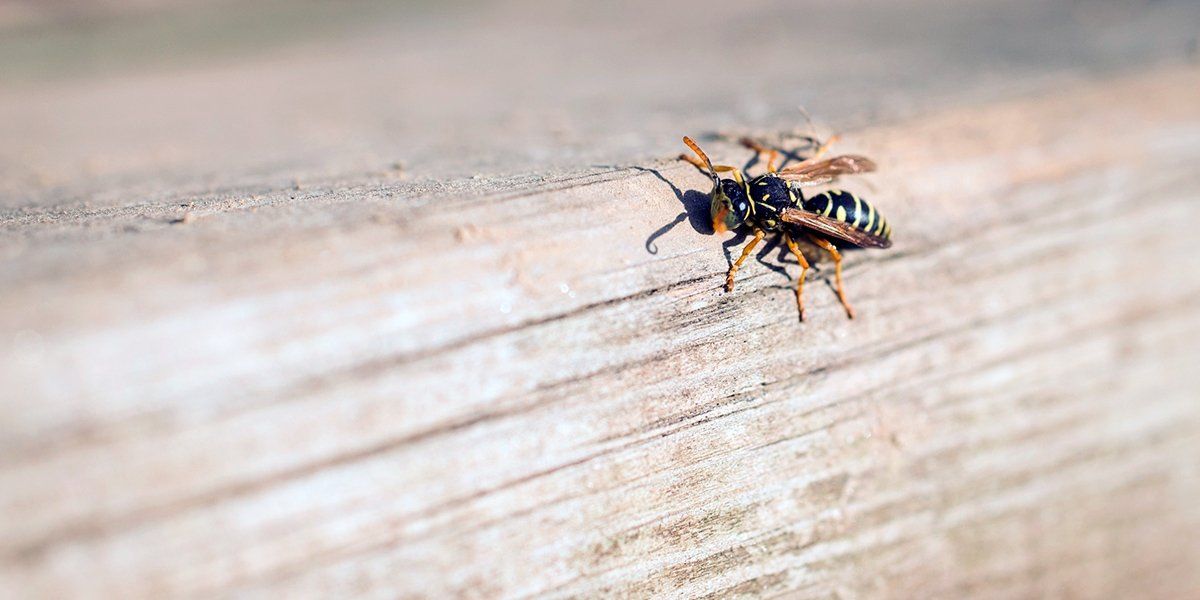What Types of Stinging Pests Are There in Boise?

Do you know that each year in United States, stinging pests like bees and hornets send a whopping 500,000 people to emergency room? Majority of the stinging pests are active during the second half of summer and early fall. This is the time when their colonies forge for food for their queen to sustain during the winter season.
Although we have seen scorpions in Idaho, they are much more rare than in other climates. Heck, we've even seen Camel Spiders in Idaho, also called "Wind Scorpions. The name is a bit misleading though because they do not have a stinger like typical scorpions.
In Boise, there are several different types of stinging pests that you may encounter in and around your house, especially during the summer months. Chances are that you already have a nest of wasps in or around your house, and now you are worried about it.
The best way to get rid of these pesky stingers is to call a professional pest control company for help. Averse Pest provides wasp nest removal in Boise and treatment of all other types of stinging pests that might be buzzing around in your house.
The reason they are an issue and dangerous for your family is their ability to sting and inject venom in your skin. The sting is not only painful, it also leaves skin infection and possible allergies, which can require medical treatment.
Below, we have discussed some of the common types of stinging pests that are found here in Boise. Generally, all stinging insects hang around and build their nests in high place on your property. They are attracted to sugary fluids, meats, moist pet food and trash cans.
Wasps
Wasps are one of the most commonly found stinging insects in Boise. They are often seen flying around your house, in your backyard where they feed on some food source. Wasps create a honeycomb like nest which they stick to the walls, eves, fences, patio covers and literally any place they can find to build it. Usually wasps are small in size but some can grow as much as 3”to 4”in diameter.
If you spot a wasp nest in your house, the worst thing you can think of doing is knocking it down. That would aggravate the situation and make them angry. Chances are you might be attacked by an entire colony of wasps, which in some situations can be deadly as well.
Like any other insect, wasps also have further types. In Boise, the two most commonly found species of wasps are the following:
- Mud Dauber Wasp: These wasps are black and yellow in color, but sometimes they can be metallic blue or black. These are quite small wasps, measuring only ½ – 1” with six legs on their body. They have a long antenna and a stinger on the back. The female mud dauber wasps’ prey on spiders. Usually they paralyze their prey with their stinger and preserve it until their larvae are ready to feed on it. As the name tells, they build their pipe like nests that are sealed off with mud. Each cell of their nest contains their paralyzed prey and a single egg. Usually these wasps are solitary and they rarely interrupt with human beings. However, they multiply quickly and it becomes difficult to control them
- Ichneumon Wasp: These wasps have a very long body and they measure 1 ½ inches with long antennas. Some of these are extremely dark in color while others have bright colored patterns on their body. Unlike other wasps, ichneumon wasps need a host to insert their eggs in them. Once the eggs hatch, the baby wasps eat their host. These wasps do help to control pest population by preying on them and they rarely bite humans. However, they are known to multiply and spread at a very rapid rate. So if you spot any of these around your house, call us for help
Hornets
Yellow Jackets
Bees
Quick Links
--
About Us
--
Averse Pest Control was started to give folks a smarter way to keep their homes and families protected from the pests in the Boise area; one that is safe, local, effective, fast, and service-oriented.
We're a small company, but we've gained a reputation for excellence. We'd love to earn your business!
